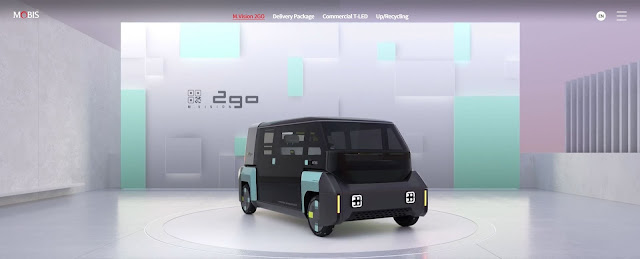Hyundai Mobis is the seventh largest automotive supplier in the world and the company has a history of showing interesting concepts at CES. This year was no different as they displayed the M.Vision Pop and the M.Vision 2Go. Starting with the M.Vision Pop, it’s an urban two-seat electric vehicle that has “everything necessary” for a car sharing service including Level 4 autonomous driving technology. However, the vehicle also supports manual driving and the steering wheel can slide to allow the ‘passenger’ to take the concept for a spin.
Speaking of the interior, the concept is
envisioned as a “shared vehicle that can be personalized through a smartphone.”
As the company explained, users create a profile in the M.Vision Pop app and
then attach their smartphone to the steering wheel. This effectively turns your
phone into a digital instrument cluster. The model also has a widescreen
display, which is broken up into three different sections that can be
customized using the app.
Those are certainly interesting features,
but the concept is more notable for its E-Corner Modules. They combine an
electric motor with steering, braking, and suspension components. It’s a bit
hard to explain, but the E-Corner Modules enable the wheels to turn 90° so the
vehicle can simply slide into tight parking spaces. The wheels can also turn in
opposite directions to enable the concept to spin 360°. The M.Vision 2Go is
based on the same platform as the M.Vision Pop, but it was envisioned as a
delivery vehicle and features a fuel cell powertrain which enables it to travel
up to 200 km.
Given its mission as a delivery vehicle,
it’s 600 mm longer than the M.Vision Pop and features a rear
cargo area with adjustable shelves made out of recycled plastic. The concept
has a cargo capacity of approximately 600 liters and boasts a
removable cart that resembles a door from the outside. The cart has wheels and
a deployable handle, which helps drivers carry packages from the M.Vision 2Go
to their final destination.
The concept is also notable for featuring
transparent LED modules, which act as windows and can be used to display
advertisements. The panels can also display animations to alert pedestrians and
drivers that the vehicle is being loaded or unloaded.






